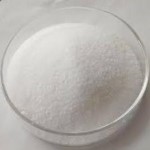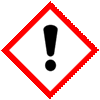CAS Number 6381-77-7 or 63524-04-9, Sodium Erythorbate FCC Food Grade Manufacturers Exporters







CAS Number 6381-77-7 or 63524-04-9, Sodium Erythorbate Manufacturer Exporter
For Properties Specifications of Sodium Erythorbate Click Properties, Specifications of Sodium Erythorbate Manufacturer.
For Uses of Sodium Erythorbate Click Uses of Sodium Erythorbate Manufacturer.
For For SDS MSDS Sheet of Sodium Erythorbate Click SDS Safety Data Sheet MSDS Sheet of Sodium Erythorbate Manufacturer.
The Properties and Specifications of Sodium Erythorbate:
Specifications of Sodium Erythorbate FCC Food Grade:
C6H7NaO6-H2O Formula weight 216.12
CAS Number 6381-77-7
DESCRIPTION
Sodium Erythorbate occurs as a white, crystalline powder or as granules. In the dry state it is reasonably stable in air, but in solution it deteriorates in the presence of air, trace metals, heat, and light. One-gram dissolves in about 7 mL of water. The pH of a 1:20 aqueous solution is between 5.5 and 8.0.
Function: Preservative; antioxidant.
REQUIREMENTS
Identification:
A. A 1:50 aqueous solution slowly reduces alkaline cupric tartrate at 25C but does so more readily upon heating.
B. Add a few drops of sodium nitroferricyanide, followed by 1 mL of 0.1N sodium hydroxide to 2 mL of a 1:50 aqueous solution acidified with 0.5 mL of 0.1N hydrochloric acid. A transient blue color immediately appears.
C. It gives positive tests for Sodium.
Assay: Not less than 98.0% and not more than 100.5% of C6H7NaO6-H2O.
Lead: Not more than 5 mg/kg.
Loss on Drying: Not more than 0.25%.
Optical (Specific) Rotation [alpha]D 25°: Between +95.5° and +98.0°.
Oxalate: Passes test.
The Uses of Sodium Erythorbate:
Sodium Erythorbate is an antioxidant preservative that is the sodium salt of Erythorbic acid. In meat curing, it controls and accelerates the nitrite curing reaction and maintains the color brightness. It is used in frankfurters, bologna and other cured meats. Sodium erythorbate is a food additive used predominantly in meats, poultry, and soft drinks. Sodium erythorbate is the sodium of erythorbic acid, a highly refined food-grade chemical closely related to vitamin C.
The MSDS-SDS Hazard Statement of Sodium Erythorbate:
Sodium Erythorbate or Sodium Isoascorbate SDS, Safety Data Sheet
MSDS Sheet, Material Safety Data Sheet 24-Jan-23
Section 1: Chemical Product
Product Name & Other Names:Sodium Erythorbate or Sodium Isoascorbate.
CAS#: 6381-77-7
EINECS EC number: 228-973-9
Chemical Formula: C6H7NaO6
Molecular Weight: 198.11
Relevant uses and uses advised against (if any): Industrial Manufacturing.
Section 2: Hazards Identification
GHS, Globally Harmonized System Classification in accordance with 29 CFR 1910
Classification according to Regulation (EC) No 1272/2008
Serious eye damage/eye irritation Category 2A, H319
Labeling according to GHS & Regulation (EC) No 1272/2008
GHS Label Elements  Irritant |
Signal Word: Warning
Hazard statements:
H319: Causes serious eye irritation.
Precautionary statements:
P261: Avoid breathing dust/fume/gas/mist/vapors/spray.
P262: Do not get in eyes, on skin, or on clothing.
P264: Wash … thoroughly after handling.
P280: Wear protective gloves/protective clothing/eye protection/face protection.
P281: Use personal protective equipment as required.
P302+P352 - IF ON SKIN: Wash with plenty of soap and water.
P303+P361+P353 - IF ON SKIN (or hair): Remove/Take off immediately all contaminated clothing. Rinse skin with water/shower.
P304+P340: IF INHALED: Remove victim to fresh air and keep at rest in a position comfortable for breathing.
P305+P351+P338: IF IN EYES: Rinse cautiously with water for several minutes. Remove contact lenses, if present and easy to do. Continue rinsing.
P337+313: If eye irritation persists get medical advice/attention.
Section 3: Composition and Information on Ingredients
Product Name & Other Names:Sodium Erythorbate or Sodium Isoascorbate.
CAS#: 6381-77-7
EINECS EC number: 228-973-9
Section 4: First Aid Measures
Always seek medical attention after first aid measures are provided.
Eye Contact: Check for and remove any contact lenses. Immediately flush eyes with running water for at least 15 minutes, keeping eyelids open. Cold water may be used. Do not use an eye ointment. Seek medical attention.
Skin Contact: After contact of Sodium Diacetate with skin, wash immediately with plenty of water. Gently and thoroughly wash the contaminated skin with running water and non-abrasive soap. Be particularly careful to clean folds, crevices, creases, and groin. Cold water may be used. Cover the irritated skin with an emollient. If irritation persists, seek medical attention. Wash contaminated clothing before reusing.
Serious Skin Contact: Wash with a disinfectant soap and cover the contaminated skin with an anti-bacterial cream. Seek medical attention.
Inhalation: Allow the victim to rest in a well-ventilated area. Seek immediate medical attention.
Serious Inhalation: Not available.
Ingestion: Do not induce vomiting. Loosen tight clothing such as a collar, tie, belt, or waistband. If the victim is not breathing, perform mouth-to-mouth resuscitation. Seek immediate medical attention.
Section 5: Fire and Explosion Data
Flammability of the Product: May be combustible at elevated temperature.
Products of Combustion: These products are carbon oxides (CO, CO2). Some metallic oxides.
Fire Fighting Media and Instructions:
SMALL FIRE: Use DRY chemical powder.
LARGE FIRE: Use water spray, fog, or foam. Do not use water jet.
Extinguishing Media Not recommended: Avoid using solid water jet as it may scatter the fire.
Special Information: In the event of a fire, wear full protective clothing and NIOSH-approved self-contained breathing apparatus with full face piece operated in the pressure demand or other positive pressure mode. At elevated temperatures under fire conditions, it may produce toxic or irritating fumes. Fire-extinguishing work is done from the windward and the suitable fire-extinguishing method according to the surrounding situation is used.
Section 6: Accidental Release Measures
Personal precautions, protective equipment, and emergency procedures: Avoid breathing dust/fumes/gas/mist/vapors/spray. Use individual protective equipment (waterproof boots, suitable protective clothing, safety glasses, etc.).
Environmental precautions: Do not let the product enter drains, soil, or water sources.
Methods and materials used for containment cleanup procedures and Storage: Do not inhale vapors, mist, or gas. Avoid dust formation. Contain spilled material. Cover with an inert, non-combustible absorbent material, (e.g., sand, earth, diatomaceous earth, vermiculite). Use a shovel to put the material into a convenient waste disposal container. Finish cleaning by spreading water on the contaminated surface and allow to evacuate as per law.
Section 7: Handling and Storage
Precautions for safe handling: Apply according to good manufacturing and industrial hygiene practices. Ensure proper ventilation. In case of insufficient ventilation, wear suitable respiratory equipment. Wash thoroughly after handling. Do not drink, eat, or smoke while handling. Avoid contact with skin, eyes, and clothing. Minimize dust generation. Avoid breathing dust/fumes/gas/mist/vapors/spray. Keep container tightly closed. Avoid ingestion and inhalation. Use individual protective equipment (waterproof boots, suitable protective clothing, safety glasses, etc.).
Conditions for safe storage, including any incompatibilities: Store in cool, dry, and ventilated area away from heat sources and protected from sunlight in tightly closed original container. Keep air contact to a minimum. Store protected from heat, sparks and ignition sources and incompatible materials. Avoid contact with skin and eyes. Avoid inhalation of dust/mist/vapor. Do not store with incompatible materials like strong oxidizing agents. Ground all equipment. Combustible material should be stored away from extreme heat and away from strong oxidizing agents.
Section 8: Exposure Controls/Personal Protection
Engineering Controls: Use process enclosures, local exhaust ventilation, or other engineering controls to keep airborne levels below recommended exposure limits.
Ventilation System: A system of local and/or general exhaust is recommended to keep employee exposures as low as possible.
Personal Respirators (NIOSH Approved): For conditions of use where exposure to dust or mist is apparent and engineering controls are not feasible, a particulate respirator may be worn.
Skin Protection: Wear protective gloves and clean body-covering clothing.
Eye Protection: Use chemical safety goggles and/or full-face shield where dusting or splashing of solutions is possible. Maintain eye wash fountain and quick-drench facilities in work area.
Other Control Measures: Maintain good housekeeping in work area. Handle in accordance with good industrial hygiene and safety practice.
Section 9: Physical and Chemical Properties
Physical state and appearance: White Crystalline Powder or Granules.
Odor: Not available.
Odor threshold: Not available.
pH (1% solution/water): 5.5 to 8
Relative density: Not available.
Melting Point: Not available.
Initial boiling point and boiling range: Not available.
Flash point: Not available.
Auto-ignition temperature: Not available.
Decomposition temperature: Not available.
Upper/lower flammability or explosive limits: Not available.
Vapor pressure: Not available.
Vapor density: Not available.
Evaporation rate: Not available.
Flammability (solid, gas): Not available.
Partition coefficient: n-octanol/water: Not available.
Solubility: Soluble in cold water, hot water.
Viscosity: Not available.
Section 10: Stability and Reactivity Data
Stability: Stable under good condition of storage.
Incompatibility with various substances: Strong oxidizing agents.
Corrosivity: Non-corrosive in presence of glass.
Polymerization: No.
Section 11: Toxicological Information
Toxicity to Animals: Not available.
Carcinogenicity: No component of this product present at levels greater than or equal to 0.1% is identified as possible or confirmed human carcinogen by IARC, ACGIH, OSHA and NTP.
Mutagenic Effects: Not available.
Developmental Toxicity: Not available.
Reproductive Effects: No information available.
Section 12: Ecological Information
Aquatic toxicity (acute): Not available.
Results of PBT and vPvB assessment: This substance is not considered to be persistent, bioaccumulating nor toxic (PBT).
Section 13: Disposal Considerations
Waste Disposal: To be done as per local regulations.
Section 14: Transport Information
DOT USA, TDG Canada & ADR/RID Europe: Not controlled.
IMDG/IMO: Not controlled.
IATA/ICAO: Not controlled.
Section 15: Other Regulatory Information
USA:
SARA 311/312: See section 2.
California Proposition 65: Not listed.
Section 16 - Additional Information
Disclaimer:
**************************
Our company provides this MSDS sheet in good faith but makes no representation as to its comprehensiveness or accuracy. This SDS sheet is intended only as a guide to the appropriate precautionary handling of the material by a properly trained person using this product. The above information has been compiled from various sources and has the possibility of discrepancy and being out-dated information. Individuals receiving the information must exercise their independent judgment and do further search in determining its appropriateness for a particular purpose. In no case shall our company be liable to loss or damages by the product user.
**************************
Anmol Chemicals & Pharmaceuticals Pvt. Ltd. is an off-shoot of Anmol Chemicals Taloja. It is located in MIDC Taloja and it is manufacturing pharmaceutical grades of API, Excepients, Food grade and Reagent grade chemicals. Anmol Chemicals & Pharmaceuticals Pvt. Ltd. is a several decades old group of companies, engaged in manufacturing, supplying, distributing, wholesale supplies for actual users, retail or small pack supplies for research and development chemicals, fine and speciality chemicals, pharmaceutical excipients, mineral fortifiers in chemically pure, Analytical reagent grade, IP BP USP Ph Eur EP JP and other pharmaceutical grade monograph including FCC Food grade chemicals and Nutraceuticals, Mineral Fortifiers at best prices.

Sodium Erythorbate Structure
CAS Number 6381-77-7 or 63524-04-9, Sodium Erythorbate Manufacturer Exporter
ANMOL CHEMICALS & PHARMACEUTICALS Pvt. Ltd.
India, USA, Europe, UAE
TELEPHONE: +912223770100
Navi Mumbai, INDIA
e-mail: info(At the rate i.e. @)anmol.org
Copyright. 25-nov-24
We manufacture:
Glacial Acetic Acid Manufacturer
Dihydroxyaluminum Aminoacetate
Calcium Gluceptate or Calcium Glucoheptonate

